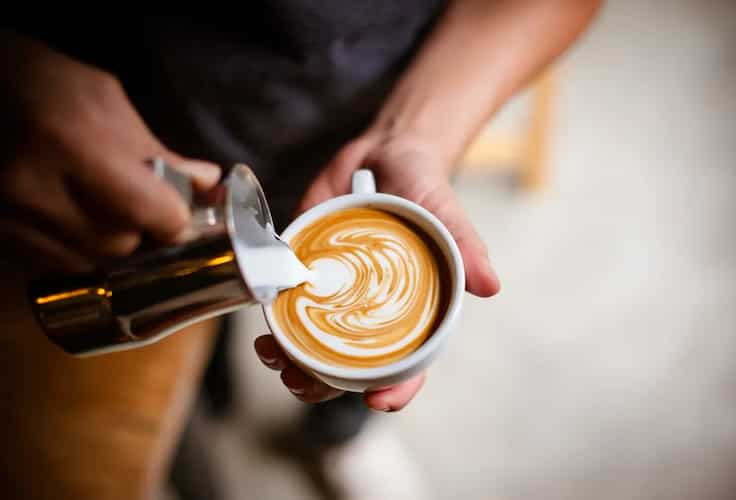It is widely acknowledged that manual brewing techniques provide better quality control and a significantly better coffee experience. Many people find that engaging in their brewing process manually rather than pressing a machine's "brew" button is more enjoyable and exciting. A wide range of tools and opposing viewpoints have emerged as a result of the expanding fad or movement for brewing gourmet-style coffee. Despite the fact that we support various brewing methods, this time we'll emphasis discussing some of the more popular manual coffee-making options.
Here are some common manual coffee brewing techniques to think about adopting, in addition to the home automatic coffee maker, for coffee lovers who wish to brew a better cup of java at home using our organic coffee beans.
Here is a quick review of various manual coffee making techniques, along with some quick advice, to serve as a beginning point for you to choose your favourite infusion technique.
Pour Over: Coffee Cone
The drip method, which uses a coffee cone and a paper filter, is one of the most traditional, uncomplicated, quick, and affordable ways to brew coffee. In a paper filter, coffee grounds are equally covered with hot water. The brewed coffee drips directly into a cup or pot using pressure. Coffee cups can be constructed of ceramic, glass, stainless steel, plastic, or glass. The flavours will vary depending on the cone's form and filters. Beans can be ground from medium-fine to coarse, and the brewing duration ranges from one to three minutes.

Pour Over: Chemex
Dr. Peter Schlumbohm created the Chemex in 1941; it is a gorgeously crafted and sophisticated pour over glass flask. It employs a unique Chemex paper filter that is 20–30% heavier than regular filters. A paper filter containing coffee grinds is filled with hot water, much like the coffee cone. The flask, which serves as its own carafe, collects the drips of the brewed coffee.
French Press
The French Press method, developed in 1929, is frequently cited as the best and simplest way to make consistently excellent coffee. It certainly extracts flavours of a greater quality than any other technique. In a press pot, ground coffee is soaked, steeped, and filtered in hot water, which helps to better disseminate and maintain the coffee's flavorful essential oils, caffeine, and antioxidants while preserving the coffee's purest flavours. It is ideal for coffee enthusiasts who appreciate a lush, expressive, and nuanced flavour.
Aero Press
Alan Adler, who also designed the Aerobie Frisbee, introduced the AeroPress in 2005. There are three pieces to the plastic AeroPress. At the bottom of the brew chamber, a coffee basket contains a filter. Coffee grounds are placed in the brew chamber, which is then filled with hot water to submerge/steep the coffee. Coffee is extracted by depressing a plunger, which creates air pressure that pushes freshly brewed coffee through a filter and into a cup.
Stovetop Moka Pot
Stovetop coffee makers, first patented in 1933 by Alfonso Bialetti, employ steam pressure from boiling water to pass over coffee grounds in the middle chamber of the pot. The higher chamber then contains brewed coffee. A stovetop pot with good design will produce excellent pressure. For a coffee with the bitterness and strength of an espresso, the beans must be ground finely, moderately, or coarsely.
Siphon
A stylish and eye-catching coffee maker is the siphon. Although it might be a difficult procedure, it can be a fun way to prepare coffee and impress people at the same time. In the 1840s, Germany was where it was created. The upper vessel is filled with coffee grounds, and vapour pressure causes hot water to rise and cover the coffee. Gravity forces the freshly brewed coffee through a filter and back into the bottom vessel when the heat has been removed. A medium-coarse grind is required for a smooth, delicate flavour.
Tips
Filters should be rinsed with hot water before use to get rid of any chemicals on the paper. There are also unbleached versions of the majority of popular size filters.
In order to obtain the best possible extraction when using the pour over method, use a slow, steady flow of hot water in a spiral motion from the centre outwards.
Use a small spouted pouring kettle to ensure equal water distribution while preparing coffee using the pour over and pressed methods.
Whenever possible, start with cold, filtered water. Use freshly roasted coffee beans, and ground them right before brewing.
Be sure the hot water is barely bubbling (205F or 96C). To keep coffee hot for longer, fill the cups and machine with hot water before use.
When trying new brew techniques, some trial and error is to be expected. Don't be anxious to alter the grind or quantity of coffee to suit your palate because everyone has different taste preferences.
Remember to compost all of your spent coffee grounds, including the filters!


